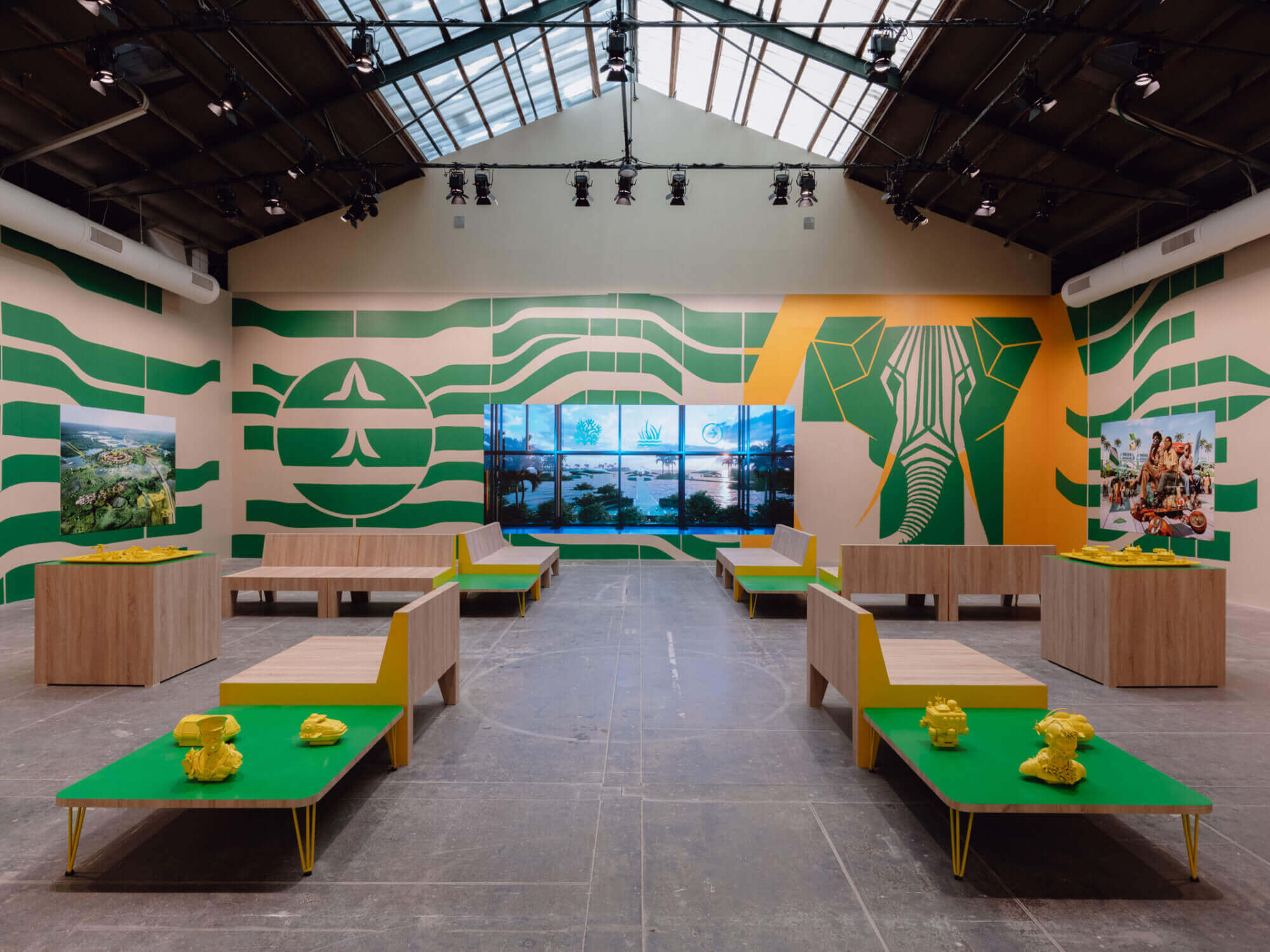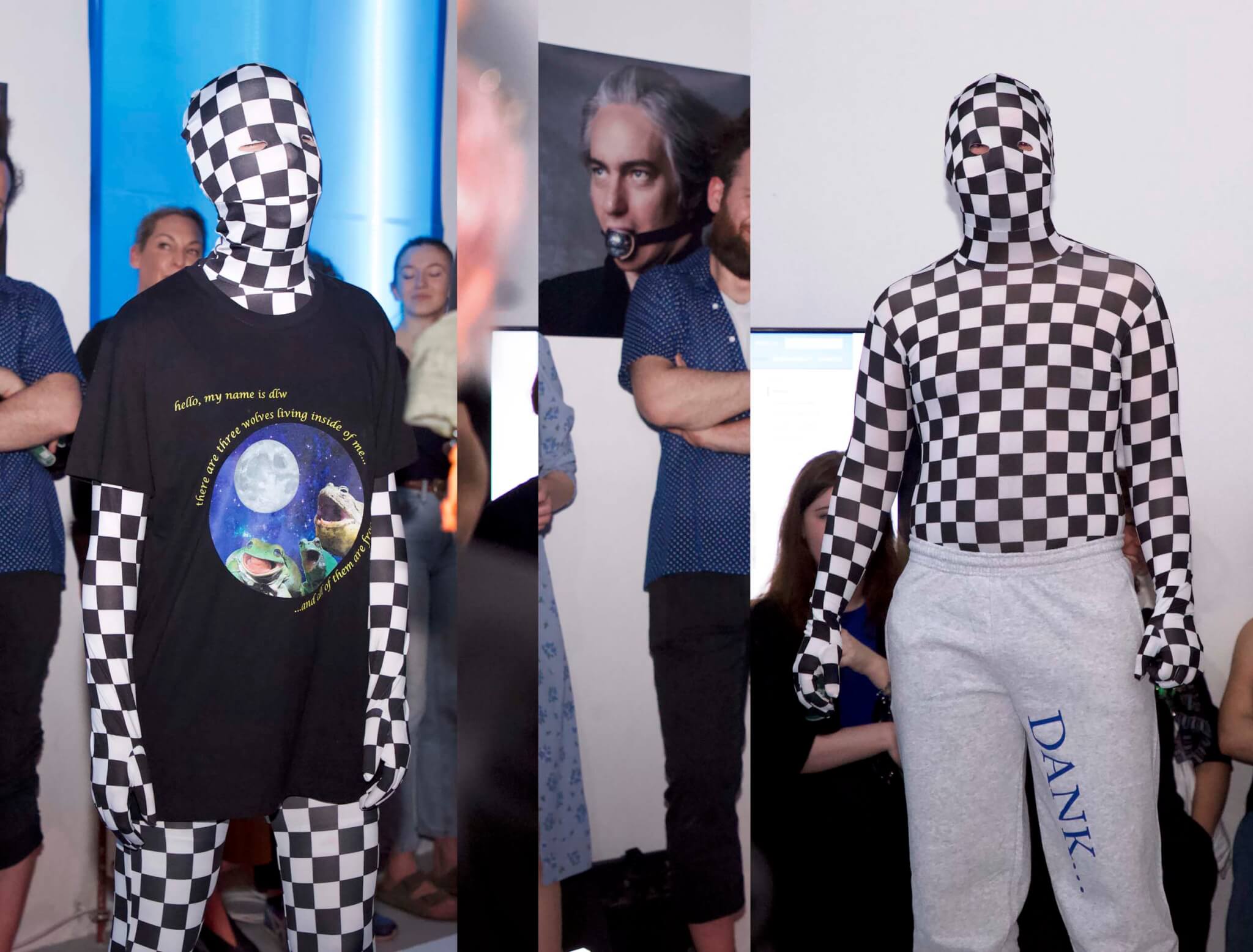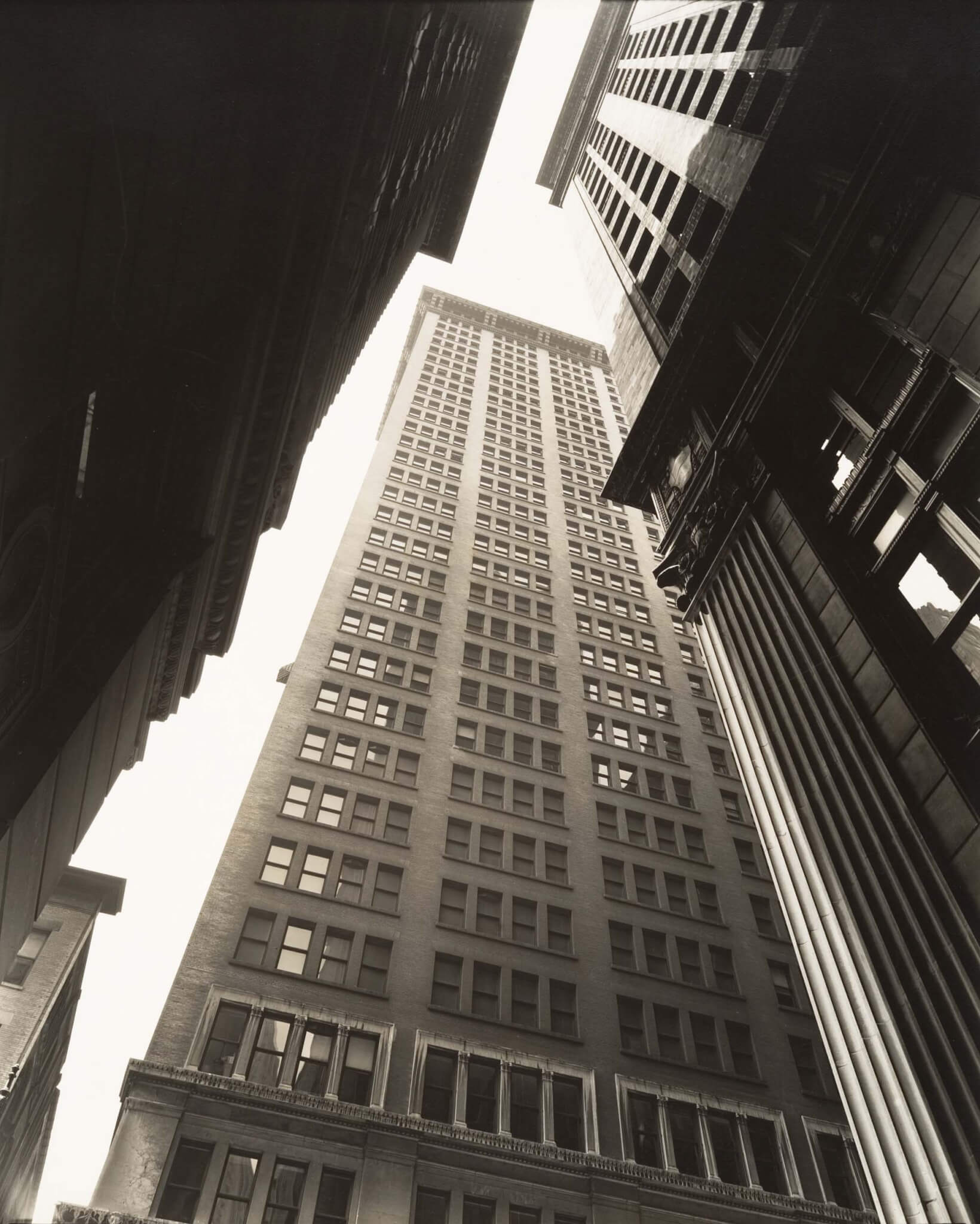This year, AN editors and contributors ventured to Venice, Chicago, Los Angeles, Detroit, New York, Vienna, and Lisbon to cover the exhibitions and installations that had the architecture world buzzing. From stagings on history and decolonization to musing on memes to a display on garbage in Ohio, here, in no particular order, is a selection of AN’s best exhibition reviews from 2023.

The Venice Biennale stunned
At this year’s Venice Architecture Biennale, curated by Lesley Lokko, AN executive editor Jack Murphy called the show a “welcome breath of futuristic air” and gave kudos to the powerhouse list of participants that displayed work.
Lokko’s thesis for the Biennale was to examine Africa as the laboratory of the future. Toward that end, 89 architects, artists, and designers responded. More than 50 percent were from Africa or identify as part of the African diaspora, a first in the Venice Architecture Biennale’s history.
In remarks during the opening press conference, Lokko addressed the crusty complaint that the overall affair “stopped short of architecture,” a common refrain for those who don’t see the value of architecture welcoming those it has excluded, either de jure or de facto. Lokko countered that “it is our conventional understanding of architecture that stops short.”

The Sharjah Architecture Triennale reimagines adaptability
Last month, AN managing editor Emily Conklin challenged architects to get lost in the desert. Conklin ventured outside of Dubai to bear witness to Sharjah’s design fair curated by Tosin Oshinowo, a Nigerian architect and designer based in Lagos. The show, titled The Beauty of Impermanence, was about reimagining adaptability, Conklin says.
With meticulous description, Conklin brought readers to Sharjah with palpable writing. She also summed up the overall zeitgeist at the program that featured myriad installations by artists and architects from the Global South.
The opening took place during the war in Gaza, and SAT staff and participants were unified in their support for Palestine and their condemnation of violence. With several participants either being from Palestine or working with marginalized Palestinian communities, the work, of course assembled years prior to October 7, suddenly took on additional urgency. Projects that may have felt conceptual or historical a year ago were now read as solutions and calls to action, not to mention being emotional encounters for viewers and participants alike. But the very base of the triennial project serves as an oasis in turbulent times: Oshinowo asserted in her opening remarks that “this is a space for solidarity and a space for peace.”
A retrospective at Brooklyn Public Library told Jay-Z’s story
This summer, book worms visiting the Brooklyn Public Library were greeted by an all-encompassing exhibition about Bedford-Stuyvesant’s own Jay-Z. AN executive editor Jack Murphy traversed the show curated to give an overview of the singer and songwriter’s legacy for the masses.
The grand effort preaches corporate hip-hop’s prosperity gospel: The show “is more than a tribute to a legendary artist and entrepreneur,” according to the opening declaration of its takeaway zine. “It’s an inspiring reminder that, no matter where you start, with talent, hard work, and a little bit of that ‘Empire State of Mind,’ you can change the world.” Jay-Z, readers learn, is a “beacon of hope for those who dare to dream beyond the confines of their circumstances.”
At Cooper Union, Anna Bokov and Steven Hillyer gave Vkhutemas its moment in the sun
The plight of the Vkhutemas: Laboratory of Modernism, 1920–1930, an exhibition at Cooper Union curated by Anna Bokov, was a hot topic for much of the winter and spring. The debut of the exhibition was postponed given the ongoing conflict between Russia and Ukraine and following an op-ed published in Archinect by Peder Anker that criticized the show.
On view for just 11 days the exhibition posited archival work, among these drawing and models, as well as the instruments and tools used by students and faculty at the school which is today often referred to as the “Soviet Bauhaus.”
The principal tragedy of the show is that it was on view for less than two weeks: Its delay from its originally scheduled run earlier in the year meant the contents were wedged between another display and the school’s final reviews and End of Year show. There were no politics in the show, but it faced political setbacks, as opponents said the effort was inappropriate given Russia’s invasion of Ukraine and The Cooper Union’s location within the neighborhood of Ukrainian Village.

Gag Economy by Dank Lloyd Wright was really weird, in a good way
Dank Lloyd Wright made its physical space debut this year through Gag Economy at Magazin Gallery in Vienna. It marked the first instance where the meme page left the phone screen for physical space, and left critics like Sam Jacob laughing, crying, doom scrolling IRL?
I’m at Gag Economy, Dank Lloyd Wright’s (DLW) debut exhibition at Magazin, a contemporary architecture space in Vienna. Self-described by its anonymous admins (a.k.a. “ants”) as an “emerging theorist proletarian psy-op,” DLW is an Instagram feed whose grid is a patchwork of ridiculous Photoshops, terrible jokes, and heartfelt demands for… what, exactly? At least something better than we have now. On the one hand, communism! On the other, just a good night’s sleep.
The bad Photoshops, collages and slogans it (they?) makes (make?) sit somewhere between critique, manifesto and, yes, gags. They call out bad practice, hyperbole, and the generally tragic state of architecture. They aim high at architecture’s most vainglorious grandstanding, but also at the profession’s everyday grind from the point of view of its labor force. The show offers both insider gossip and jokes landed from a point of view at architecture’s periphery.
CAB5 embodied the “beauty and horror” of our global moment
The fifth iteration of the Chicago Architecture Biennale titled This is a Rehearsal embodied the “beauty and horror” of our global moment, AN’s Daniel Roche said in his review. With myriad sites spread throughout Chicago, Floating Museum made a concerted attempt to ensure this year’s CAB was a city-wide affair.
Still, This is a Rehearsal successfully achieved what it sought to do: It provides a platform for participants to experiment and to show what a more democratic, horizontal biennial that touches every community in Chicago may look like; it gives visitors a glimpse into a forthcoming monument dedicated to Anna and Frederick Douglass by Norman Teague Design Studios; and it connects innovative programs happening in the city, like the Chicago Tool Library and Urban Growers Collective, with opportunities to engage with the public and grow as enterprises.
L.A.’s MAK Center showcased the late modernist Mexican architect Alejandro Zohn
AN contributor Shane Reiner-Roth ventured to the famous Schindler House this spring to cover Seeking Zohn, an exhibition hosted by MAK Center for Art and Architecture that focuses on the career of the Mexican architect Alejandro Zohn (1930–2000). The show, curated by Mimi Zeiger and Tony Macarena, commissioned six artists to interpret Zohn’s structures.
Though the show engages a small fraction of the architect’s complete body of work, Seeking Zohn gets at the heart of what the modern movement in architecture would achieve at its best: the facilitation of many ways of life—as well as the many experiences possible—within the contemporary city.

MoMA revisited photographer Berenice Abbott’s New York
Berenice Abbott’s New York Album, 1929 showcased the expansive portfolio of photographer Berenice Abbott. After earning notoriety in Paris’s glorious 1920s, Abbott moved to New York, and captured the zeitgest through her own eyes. Covering the show at MoMA, Jack Murphy wrote:
Visitors enter Abbott’s world pre-scrapbook, passing through a threshold painted warm red. Earlier works are displayed alongside portraits by Atget, offering context, before visitors arrive at the contents of the scrapbook itself. Forming the core of the show, the sequence is actually only definitively known through the book’s first 11 pages, as the set arrived unbound when The Met acquired it sometime between 1978 and 1984. (Overall, about 75 percent of the album is on view here.) Photos are laid out with care in arrangements that respond to subject matter, orientation, and geometry. There are pages of signage, docks, workers, and parades, but also abstract prints of skyscrapers with shadows cutting across the canyons of Lower Manhattan.
Andrew Economos Miller made us think differently about trash
Refuse//Repose by Andrew Economos Miller collected salvaged objects and reimagined the afterlife of architectural waste through collective action. The show reviewed by Paul Mosley, an assistant professor at Kent State, recognized the comparisons in Miller’s show to the work of Louise Nevelson, but its most pertinent allusion may also be to Robert Smithson, Mosley wrote.
Both Refuse//Repose and Partially Buried Woodshed resist a singular image, or perception, that can be extracted from their temporal duration. Like Smithson’s half-buried ruin, Miller reuses traces of northeast Ohio’s history to enter into dialogue with layers of time, and with their own interpretations. Refuse//Repose is an anti-romantic mise-en-scene of derelict objects; a ruin in reverse that, if only for a moment, intercedes in the fate of its materials as lost to decay, and reconstructs them to foreground new discursive spaces.
Exhibit Columbus paved a new path forward for community engagement
In Columbus, Indiana, at the fourth Exhibit Columbus AN’s Daniel Roche reviewed designs by rising stars who displayed worked underneath lauded buildings by bonafide architecture giants. The focus and themes of community are evident in the conversations Roche had on the ground with architects, educators, and shop owners.
The word on the tip of everyone’s tongue this year at Exhibit Columbus was “community.” The 2023 exposition is called Public by Design which focuses on centering the perspectives of local Columbus residents to inform 13 installations spread throughout the city. According to Exhibit Columbus executive director Richard McCoy, designers were tasked with making “meaningful connections in public space” alongside local community leaders.











